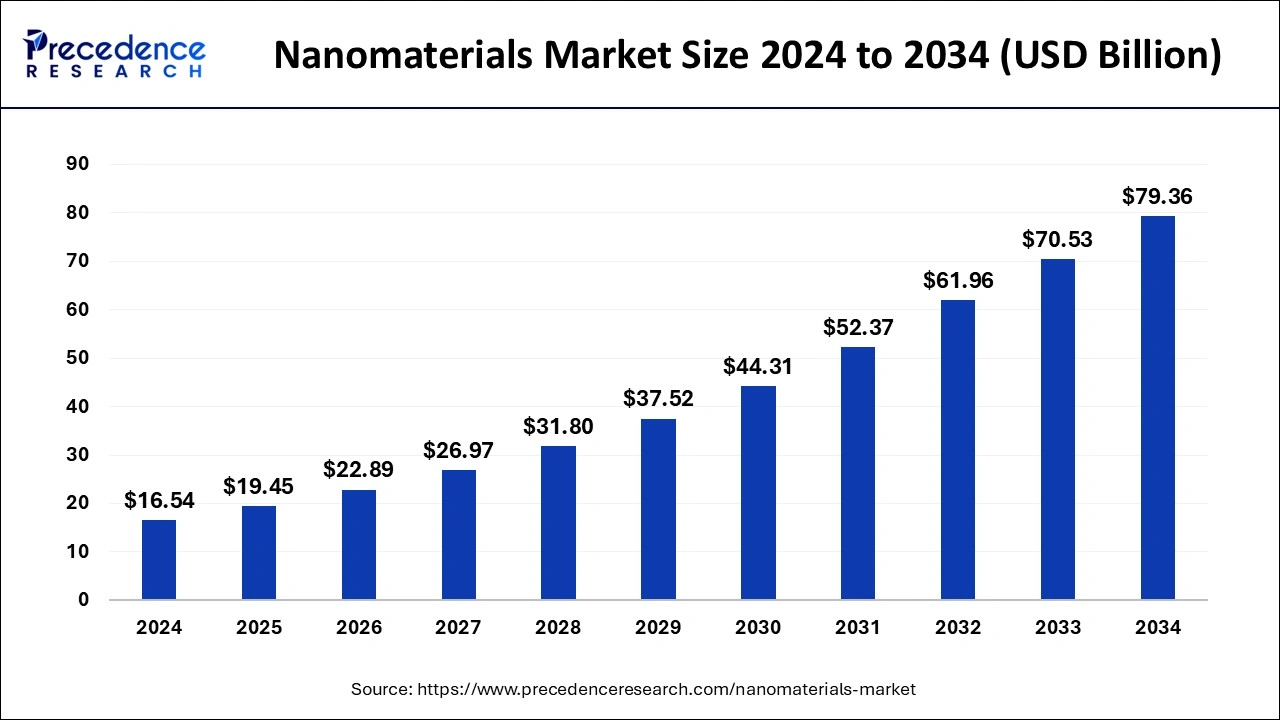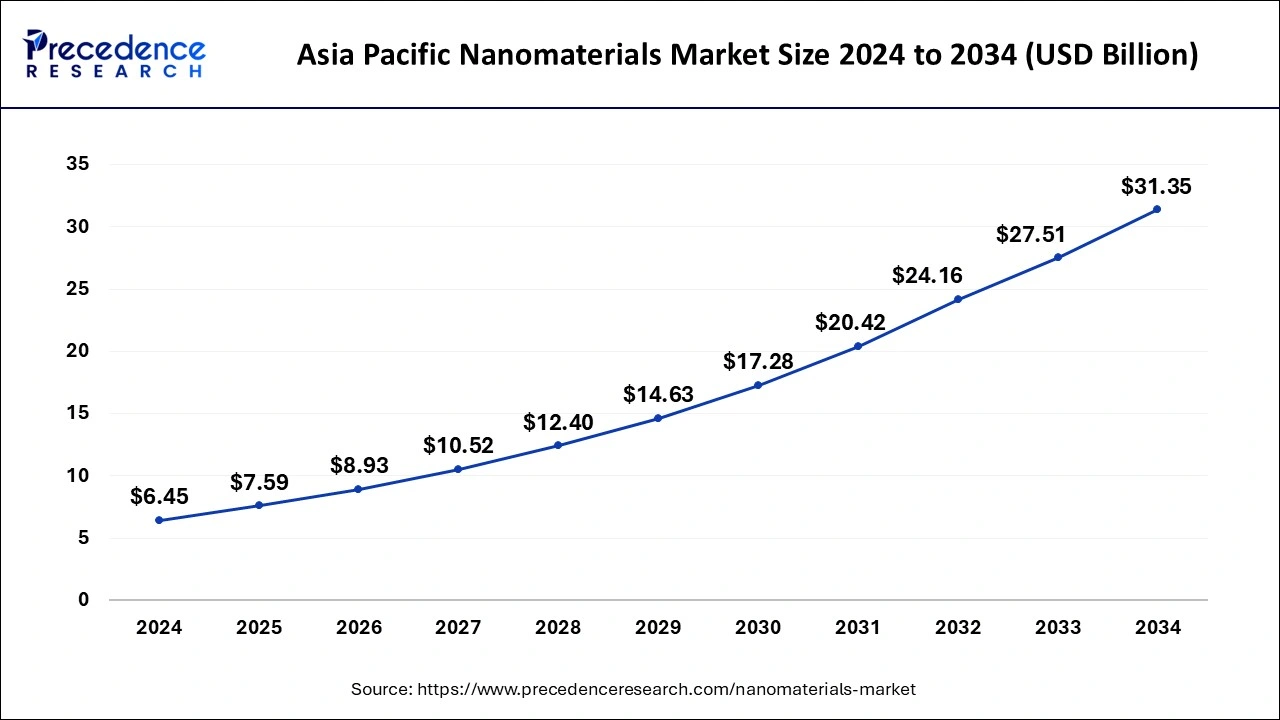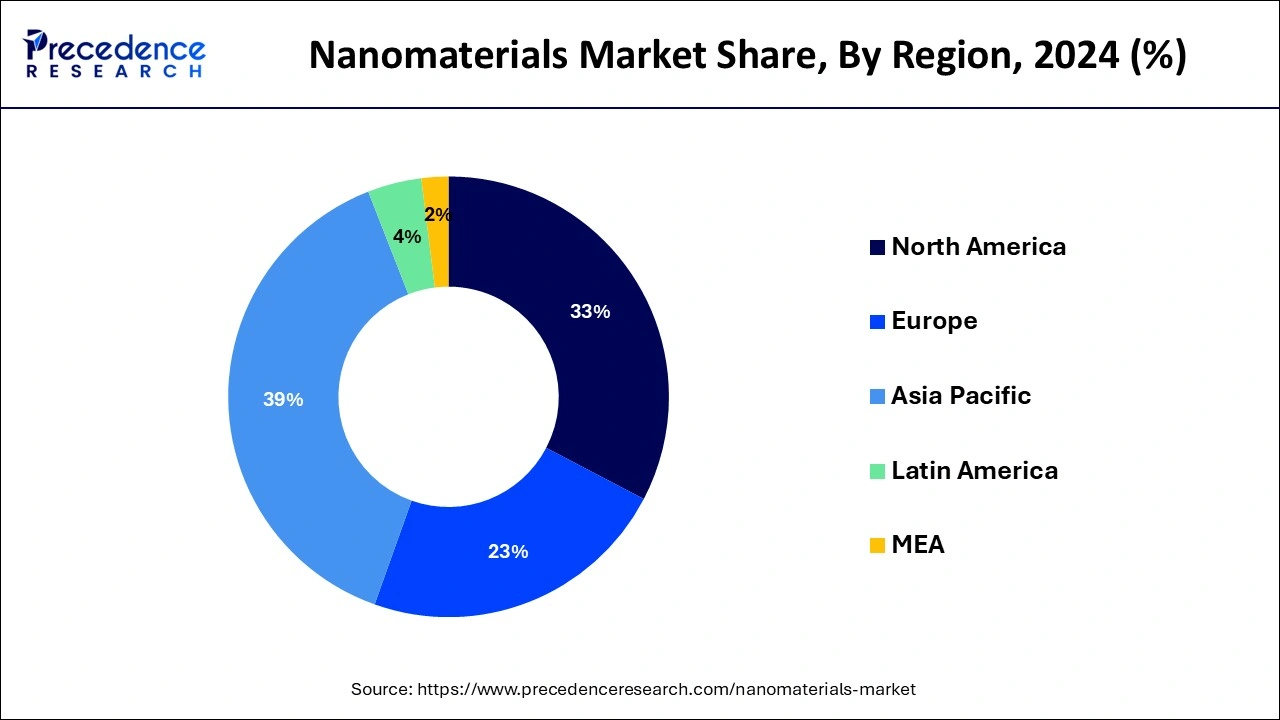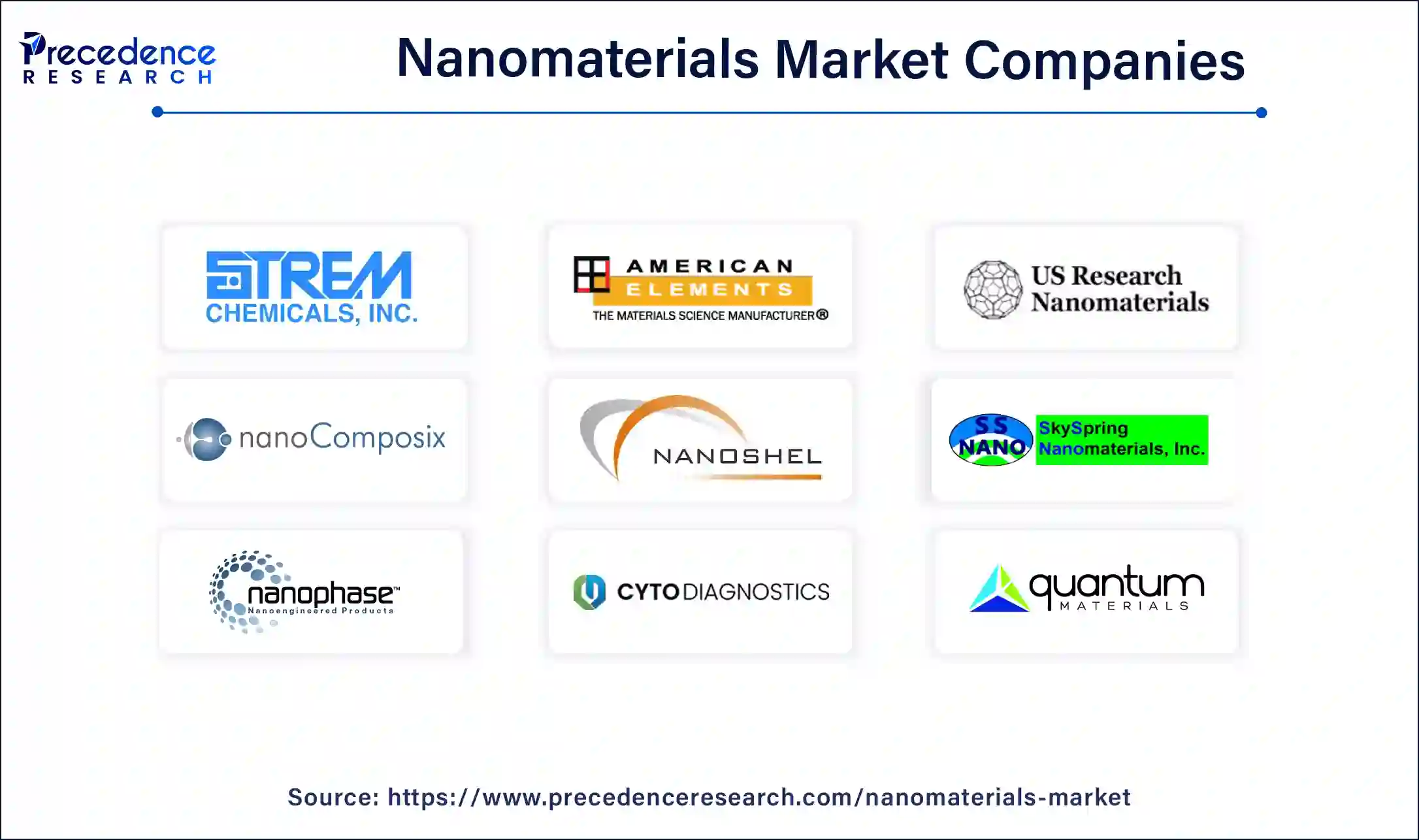November 2024
The global nanomaterials market size is estimated at USD 19.45 billion in 2025 and is predicted to reach around USD 79.36 billion by 2034, accelerating at a CAGR of 16.97% from 2025 to 2034. The Asia Pacific nanomaterials market size surpassed USD 7.59 billion in 2025 and is expanding at a CAGR of 17.12% during the forecast period. The market sizing and forecasts are revenue-based (USD Million/Billion), with 2024 as the base year.
The global nanomaterials market size was estimated for USD 16.54 billion in 2024 and is anticipated to reach around USD 79.36 billion by 2034, growing at a CAGR of 16.97% from 2025 to 2034. Rising advancements in nanotechnology and the increasing use of nanomaterials due to their excellent chemical, optical, biological, magnetic, and mechanical properties fuel the growth of the market during the forecast period.

Artificial intelligence (AI) enhances the efficiency and precision of nanomanufacturing by optimizing the production of nanoscale materials. AI-driven predictive modeling offers the simulation of complex nanoscale materials, which also helps design nanomaterials and related devices. AI accelerates material discovery and optimizes nanomaterial properties for healthcare and electronics applications. AI-driven nanotechnology is significant in material design and discovery, healthcare, energy conversion, environmental monitoring, and quantum computing. AI-driven tools and databases can understand material properties and perform complex computational tasks. Automated high-throughput experiments combined with AI-controlled robotics enable rapid synthesis and testing of several materials.
The Asia Pacific nanomaterials market size was estimated at USD 6.45 billion in 2024 and is anticipated to be surpass around USD 31.35 billion by 2034, rising at a CAGR of 17.12% from 2025 to 2034.

Asia Pacific dominated the global nanomaterials market with the largest market share of 39% in 2024 by holding the largest share. This is mainly due to the rapid expansion of the semiconductor industry along with the increased production of semiconductor devices. Due to nanoscale dimensions, nanomaterials provide enhanced functionalities and capabilities in semiconductor production. Increased adoption of medical devices and consumer electronic devices further bolstered the regional market growth. Furthermore, increasing demand from the defense and automotive industries drives the growth of the market in the region. Increasing investments in research and development activities of nanomaterials to explore new application areas further propels the market.

Europe is anticipated to be the fastest-growing region in the nanomaterials market during the forecast period due to the growing demand for nanomaterials from the energy sector. Nanomaterials are highly utilized to store electricity generated from renewable sources. The U.K. leads the nanomaterials market by having expertise in designing integrated circuits and other electronic components. Moreover, there is a strong focus on promoting the use of nanomaterials in the healthcare sector.
Nanomaterials refer to materials measured on a nanoscale or materials having nanostructures internally or on their surfaces. They have the ability to encapsulate the therapeutic agents and enhance therapeutic efficiency. They find applications in dermatology, where nanoscaffold wound dressings and nanoparticles showcase therapeutic roles against inflammatory and infectious diseases and wound healing. Moreover, nanoemulsions and nano pigments showcase cosmetic roles in the reversal of skin damage and even skin tone. Nanomaterials are also used to produce dental materials, such as coating materials for dental implants, bioceramics, bonding systems, and mouthwashes.
| Report Coverage | Details |
| Market Size in 2025 | USD 19.45 Billion |
| Market Size by 2034 | USD 79.36 Billion |
| Growth Rate from 2025 to 2034 | CAGR of 16.97% |
| Base Year | 2024 |
| Largest Market | Asia Pacific |
| Forecast Period | 2025 to 2034 |
| Segments Covered | Product, Application, Geography |
| Regions Covered | North America, Europe, Asia-Pacific, Latin America, and Middle East & Africa |
The carbon nanotubes segment contributed the biggest market share in 2024. Carbon nanotubes are broadly utilized in lithium-ion batteries as they show off the best reversible capacity. Their massive floor region and capacity to soak up and conjugate diagnostic and healing marketers, which includes drugs, genes, vaccines, biosensors, and antibodies, have enabled the usage of carbon nanotubes in a huge variety of pharmaceutical and clinical programs.
The titanium nanoparticles segment is expected to grow at a double digit CAGR during the forecast period. The boom may be attributed to its developing programs in aerospace, chemicals, clinical, petrochemicals, and architectural industries. These also are used as antimicrobial, antibiotic, and antifungal marketers in plastics and soaps, nanofibers, bandages, nanowires, and textiles which in turn is likely to boosts its demand among these industries ultimately contributing towards the growth of the overall market in terms of value sales.
The silver nanoparticles section accounted for the second largest market share in 2024. These are utilized in a wide variety of programs as antimicrobial marketers, biomedical tool coatings, drug-transport carriers, imaging probes, and diagnostic and optoelectronic systems due to their particular houses which include excessive electric conductivity, discrete bodily and optical houses, and biochemical functionality. Thus, the aforementioned facts are anticipated to drive it demand in the market contributing in overall market growth.
Aluminum Oxide nanomaterials are predicted to witness a large upward thrust in call for as a result of their awesome structural and physicochemical houses, which includes advanced resistance to mechanical stress, chemicals, and wear. The section is predicted to attain USD 1.9 billion with the aid of using 2028 and is predicted to witness large boom over the forecast period.
Depending on the application, the medical application segment dominated the global market in 2024.
The paints and coatings section is predicted to witness remarkable market share due to the improvement of cutting-edge technologies to tailor the manufacture and use of nanomaterials in the coating industry for particular needs. Nanomaterials enhance the hardening, UV-mild absorption, and biocide houses of paints and coatings. Titanium dioxide (TiO2) and silicon dioxide are most important nanomaterials utilized in paints. Additionally, Nano silver is increasingly used in paints due to its advanced antimicrobial as well as deodorizing houses. Thus, the aforementioned facts has driven the growth of the market in terms of value sales.
The demand for nanomaterials in electronics industry is extensively rising due to its growing penetration as nanowires, spintronic, and quantum dots in the nanoelectronics market. Furthermore, proliferation of the electronics industry owing to growing demand for high-tech products is anticipated to offer immense opportunities for the growth of the market during the forecast period in terms of value sales.
The energy and power segment is projected to grow at a notable CAGR over the forecast period. This is attributable to the growing demand for nanomaterials in batteries, gasoline cells, and photovoltaic movie coatings. Nanoparticles are drastically utilized in studies sports for acquiring green prototype sun panels, thermoelectric materials, and nano-bioengineering of enzymes. Thus, all the above mentioned factors are driving the demand for nanomaterials in the market.

By Product
By Application
By Geography
For inquiries regarding discounts, bulk purchases, or customization requests, please contact us at sales@precedenceresearch.com
No cookie-cutter, only authentic analysis – take the 1st step to become a Precedence Research client
November 2024